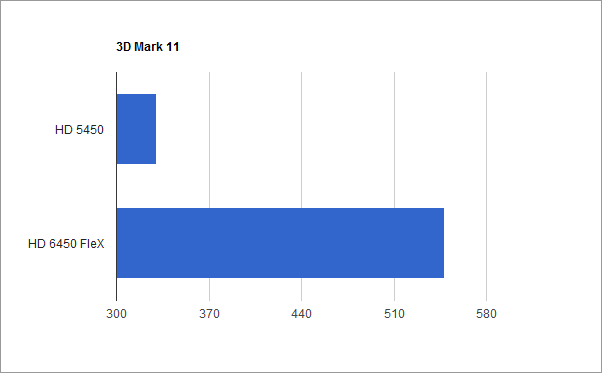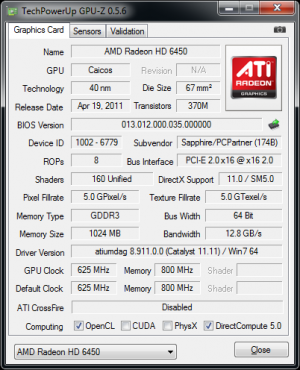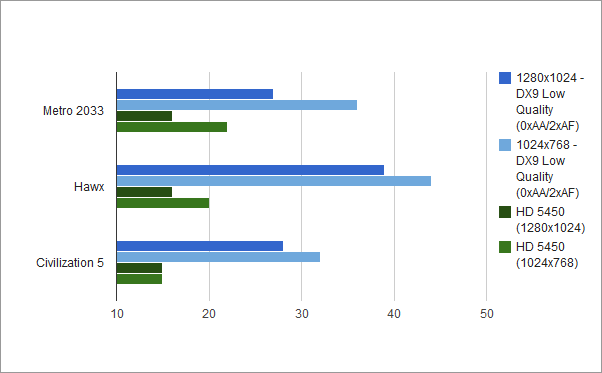Lets face it—you may not know it yet, but you want AMD Eyefinity. If you do any sort of professional work at all, whether it be writing, coding, photography, or pre-press in a printing environment, having three monitors is one of those “cannot ever go back to the old way” technologies. The increase in productivity is truly remarkable. The problem, of course, is everything involved in getting your three monitor setup prepped and ready for game time—it can be a daunting task. If you don’t already have the right monitors purchased, you’re forced to buy DisplayPort hubs or other fancy adapters for your late night frag sessions.
It needs to be simpler, and SAPPHIRE is doing just that. They’ve introduced their FleX line of cards, which take care of all the hard work so you can just sit back and game. The FleX configuration allows for three simultaneous monitors to be plugged into one card without the need for any adapters—it truly is ‘plug and play’. SAPPHIRE has a wide range of cards across all market segments with this awesome technology included. Today we’ll be taking a look at a consumer-grade low-cost solution: the Radeon HD 6450.
The card itself is a small, low-profile, passively cooled design. The ideal use for this little guy is very clear: HTPC. You should have no problem fitting the HD 6450 in a variety of systems, given the design. SAPPHIRE also includes a low-profile bracket in the box as well, for even the smallest of LAN/HTPC boxen. The company has also opted for a silent but deadly approach with the attached passive cooling unit on the card. No sense in overclocking and creating overheating issues with a passive cooling design—we’ll take a look at how well it performs a bit later on. Stock speeds of 625MHz for the GPU and 800MHz memory on the card are present, and is packed with HDMI 1.4a compliance and enough juice to display Blu-ray 3D movies for your entertainment center. The HD 6450 has the ability to decode H.264 streams as well as full MPEG-2 and MPEG-4 (DivX/XviD) decoding.
Two DVI ports (both a single and dual link connector) and an HDMI port are available for use on the back. They also include an adapter in the box to convert the HDMI to DVI, should you need it (as well as a DVI to VGA connector for even older monitors). Hats off to SAPPHIRE, who clearly have sat down and thought about what could possibly keep someone from enjoying Eyefinity right away. They’ve included everything you’d need to get around the most common of problems when installing and hooking up the card:
- Documentation – installation guide, hypermemory leaflet, registration leaflet
- Low profile bracket
- DVI to VGA Adapter
- HDMI to DVI Adapter
- Installation CD
- Case badge sticker
It’s a nice touch in a market plagued with barebone offerings (looking at you, Blu-ray players with composite cables included), especially for a consumer-grade option that less tech-centric customers would be likely to pick up—you have to consider this card as a simple drop-in upgrade to your parents’ old Dell desktop and VGA monitor with the intent of adding a second/third. While you aren’t going to be gaming across three monitors on this thing, it is clearly a simple, straightforward approach to the multimonitor question. It’s a quick solution to get you up and running on three screens with very minimal effort on your part, no doubt. Even if you aren’t going to make use of the Eyefinity option, everything you need is still there.
Benchmarks
Our testing setup for this card definitely doesn’t create any bottlenecks, allowing us to really take a look at what this little guy is capable of.
System:
- Intel 2500k (at stock speeds)
- Gigabyte GA-Z68X-UD3H-B3
- 2x4GB Corsair Vengeance LP CML8GX3M2A1600C9
- Corsair CMPSU-750TX
- Intel SRT 1.5TBHDD/60GB SSD
Tested:
- 3DMark 11
- Metro 2033
- Hawx
- Civilization 4
Note: We usually utilize a Unigine Heaven 2.5 benchmark for our videocards. Since this is clearly not a gaming quality card capable of DX11 demands, we’ll skip the redundancy and stick to 3DMark11.
3DMark 11
3DMark 11 tests the DirectX 11 capability of a system including tessellation, compute shaders, and multithreading. It’s a pretty intense benchmark and visually stunning to boot (this is quite helpful when watching multiple runs of a benchmark).

There are noticeable gains over the older HD 5450 offering, here, but still on the bottom end of the performance spectrum.
The goal for these benchmarks was to try and tweak the settings to the best reasonable playing levels. We aren’t going to be setting any new records with this card, but we wanted to take a look and see what it was capable of, all the same.
Metro 2033 is a good indicator of the top-end performance of the card. It’s a fairly demanding game, graphically, and it certainly proves itself to be a worthy benchmark tool. The results are borderline unplayable in parts, with an average just over 30 at the lowest resolution anyone would reasonably game at in today’s day and age. HAWX fared a bit better, which should be expected of a game from 2008. It’s probably the best example of console-quality you can expect from this card, and certainly highlights the ‘era’ of gaming you can base your Steam purchases around for similar performance. Civilization V, even with tessellation turned off, pushes the limits of the card. It’s a turn-based game, however, so you can get away with lower performance here.
It’s important to reiterate that this is not a gaming card, however. With UVD3 video decoding support it’s really aimed at HTPCs; however, it’s nice to know that if it comes down to it, your HTPC could play some games on your HDTV.
The major benefit of UVD3 is that it allows weaker (and less expensive) CPUs to be used in your HTPC build while still being able to decode HD video from sources such as Blu-ray. Lower power CPUs means lower heat, lower noise, and lower cost. Again—all perfect qualities for HTPC use.
UVD3 can offload CPU rendering of H.264, MPEG2, VC-1, Blu-ray 3D, DivX and XviD at 1080p up to 24Mbits (48Mbit for Blu-ray), which means your CPU stays in a low-power state, and so does the GPU, since UVD3 is a fixed-function GPU block. Ideally, you’ll pair this GPU with a very low-power CPU that can tie all this together; Intel Core i3, AMD A-series, or E-series would all be perfect for a low cost HTPC built around this card.
Noise and Temps
As a passively cooled card, the FleX really excels in both arenas. To emulate a stuffy HTPC case, we disabled the case fans on the front of our NZXT H2, leaving one lone 120MM fan to expel warm air from the test system. Temps were measured in AIDA64 Extreme Edition, using FurMark over a 30 minute period. At no point did the card get warmer than 64C. Being a passively cooled GPU, noise was nonexistant—the perfect complement to a solid HTPC setup, since the last thing you want is a heatsink fan ruining your movie experience.
Conclusion
So what are we given in this FleX package? A ‘console quality’ gaming card capable of supporting a variety of playback modes for your home theatre, including the most demanding of formats your onboard video options are likely to have trouble with. Also, an ideal card for professionals who want to go to three monitors in the most pain-free way possible. It’s a very tough price bracket to compete in, but the selling point of this card is the ease of getting up and running with three monitors. It’s a viable option to drop into any store-bought OEM offering, provided you have two available slots on the back of the case and one available PCIe connector. Given that it takes the extra slot due to the larger passive heatsink, however, it does limit your options—even with the inclusion of the low profile bracket. At the end of the day, though, you get a very low power, very quiet, very capable HTPC card. It has all the video decoding features and options you could want for an HTPC—one very few competing cards can come close to.
The $10 price premium on the card brings with it the need to not have to deal with buying extra dongles and adapters for easy multi-monitor setups, as well.
The SAPPHIRE Radeon HD 6450 FLeX edition is available for $59.99.









 Articles RSS
Articles RSS